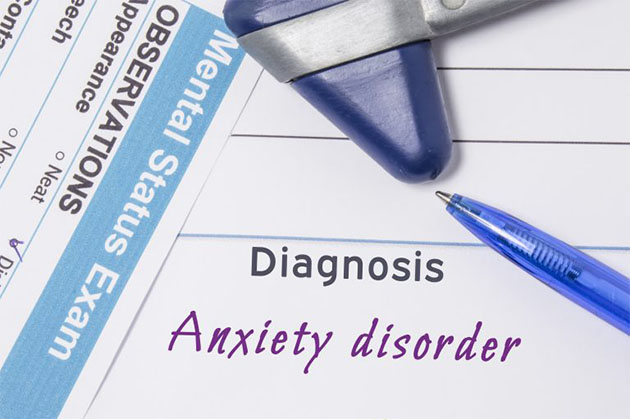Researchers have studied detailed effects of ‘pessimistic thinking’ which occurs in ચિંતા અને ડિપ્રેસન
વિશ્વભરમાં 300 મિલિયન અને 260 મિલિયનથી વધુ લોકો તેનાથી પીડાય છે હતાશા અને ચિંતા respectively. Many times, a person suffers from both these conditions. Psychiatric problems like depression and ચિંતા are devastating for patients and their families and they are extremely difficult to treat. Patients suffering from these neuropsychiatric disorders tend to experience a range of negative emotions and moods which makes them more pessimistic thereby making them focus more on the downside of any given situation. A specific personalised treatment can generally help patients alleviate some of the symptoms of these disorders. A type of psychotherapy – cognitive-behaviour therapy – is useful in curbing negative thoughts and emotions. Interpersonal therapy is also routinely used for better outcome for patients. Medications are also advised along with psychotherapy and sometimes interpersonal therapy.
Understanding the effects of depression and ચિંતા વિકૃતિઓ
માં પ્રકાશિત એક અભ્યાસમાં ચેતાકોષ scientists have studied how emotions are controlled by our brain. The main goal of researchers was to investigate if they could reproduce the effect on brain which happens to people suffering with depression, ચિંતા or other similar disorders. These patients have a highly negative thinking and they tend to place more weight on negative aspects and outcomes of any particular situation.
The group of researchers from MIT pinpointed a region in the brain which is linked to emotional decision making and is responsible for generating pessimistic moods. This region is called ‘caudate nucleus’ and when it is stimulated it leads to generation of negative moods and /or decisions. This study has been conducted in animals for now. The animal was seen to focus more on the negative drawbacks of situations and not on the benefits whenever this region was stimulated in their brain. This pessimistic decision-making continued for at least 24 hours after the first stimulation was performed. The same group of researchers had previously identified a neural circuit which is crucial for a type of decision making which is called as ‘approach-avoidance conflict’. Making such choices requires a person to weigh the positive as well as negative aspects of a situation and this involves high levels of ચિંતા and sometimes stress. This stress obviously then affects the decision-making process. Therefore, animals got influenced and they then chose a high-risk option under stress anticipating better payoffs.
માન્યતાઓ બનાવવા માટે, સંશોધકોએ પ્રાણીઓને બિન-મૈત્રીપૂર્ણ ઉત્તેજના (તેમના ચહેરા પર હવાનો મોટો પફ) સાથે ઈનામ (રસ) ઓફર કર્યા અને પછી નાના વિદ્યુત પ્રવાહ સાથે તેમના કૌડેટ ન્યુક્લિયસને ઉત્તેજિત કર્યા. દરેક અજમાયશમાં પ્રાણીઓ સ્વીકારશે કે નકારશે તે નક્કી કરવા માટે ઇનામ અને પીડા માટે અલગ પ્રમાણનો ઉપયોગ કરવામાં આવ્યો હતો. આ નિર્ણય લેવાનું એક ઉદાહરણ છે જેમાં ખર્ચ અને લાભનું વિશ્લેષણ જરૂરી છે. તે જોવાનું રસપ્રદ હતું કે દરેક ઉત્તેજના પર, જ્યારે ખર્ચ-લાભનો ગુણોત્તર વિકૃત થયો એટલે કે વધુ ખર્ચ અને ઓછો લાભ, ત્યારે પ્રાણીઓએ અગાઉ સ્વીકારેલા સંયોજનોને નકારવાનું શરૂ કર્યું. ઉત્તેજના પછી 24 કલાક સુધી આ ચાલુ રહ્યું. આ દર્શાવે છે કે પ્રાણીઓએ પુરસ્કારનું અવમૂલ્યન કરવાનું શરૂ કર્યું જે તેઓ અગાઉ ઈચ્છતા હતા અને તેમનું ધ્યાન ખર્ચના ભાગ તરફ વધુ વળ્યું. ઉપરાંત, તેમની સ્વીકૃતિ અથવા અસ્વીકારના આધારે, જ્યારે પણ તેમની નિર્ણય લેવાની પદ્ધતિમાં કોઈ ફેરફાર થાય છે ત્યારે કોડેટ ન્યુક્લિયસમાં તેમની મગજની પ્રવૃત્તિ બદલાઈ જાય છે. તેથી, 'બીટા ફ્રીક્વન્સી' માં આ ફેરફાર બાયોમાર્કર તરીકે કામ કરી શકે છે તે જોવા માટે કે શું પ્રાણીઓ ચોક્કસ દવાઓને પ્રતિભાવ આપશે.
મૂડ નિયમન
Researchers explained that some regions in the caudate nucleus are connected with the limbic system which is known to control a person’s mood. This system directs input to motor areas of the brain as well as the dopamine-producing regions. The authors concluded that maybe caudate nucleus was disrupting this dopamine activity. Therefore, even a slight change in our system could mean rapid change our behaviour. The findings in this study could help us understand depression and ચિંતા in detail which can then assist us to develop new effective ways of therapy.
***
{તમે ટાંકેલા સ્ત્રોત(ઓ)ની સૂચિમાં નીચે આપેલ DOI લિંક પર ક્લિક કરીને મૂળ સંશોધન પેપર વાંચી શકો છો}
સ્રોત (ઓ)
એમેમોરી કે એટ અલ 2018. સ્ટ્રાઇટલ માઇક્રોસ્ટીમ્યુલેશન સ્ટ્રાઇટલ બીટા-બેન્ડ ઓસિલેશન દ્વારા અનુમાનિત સતત અને પુનરાવર્તિત નકારાત્મક નિર્ણય-નિર્માણને પ્રેરિત કરે છે. ચેતાકોષ. https://doi.org/10.1016/j.neuron.2018.07.022
***






































